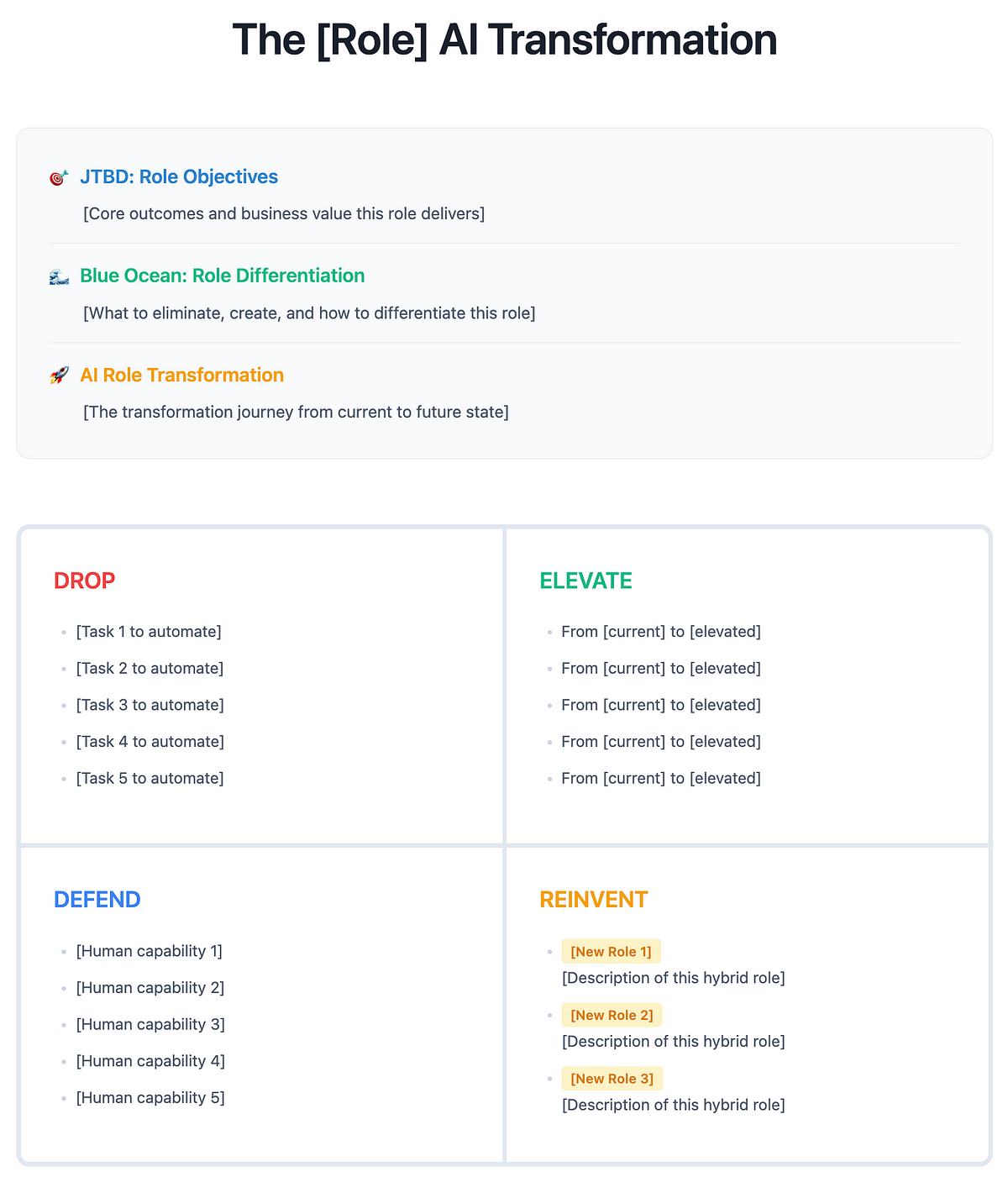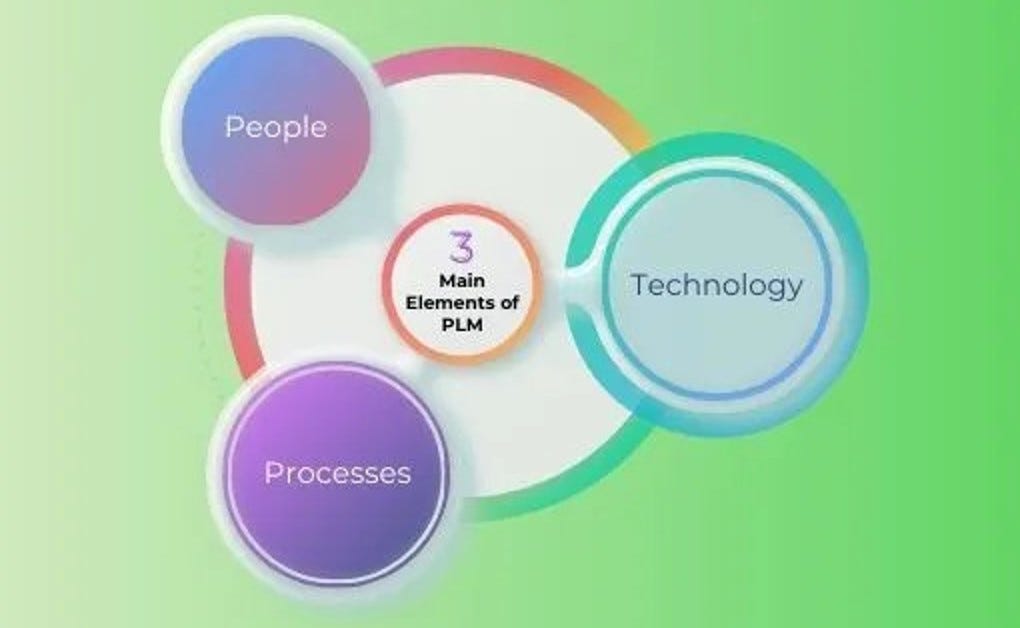Product Management News
Medium
425

What Is Product Management, Really?
- Product Managers (PMs) collaborate with designers, developers, marketers, and salespeople to bring ideas to life and ensure they benefit users.
- PMs focus on building the right product, not just building it correctly, by understanding users' needs, frustrations, and impactful problems.
- They prioritize useful ideas that serve both the business and the user, engaging with designers on aesthetics, engineers on functionality, and marketing on the launch.
- PMs make tough decisions on what features are most essential at present and evaluate the success of implemented features by analyzing user adoption and feedback.
- In product management, it's crucial to shape thoughts into practical actions, which can be achieved through personal product management experiences and by enhancing existing products.
Read Full Article
25 Likes
Lenny's Newsletter
376

Image Credit: Lenny's Newsletter
AI prompt engineering in 2025: What works and what doesn’t | Sander Schulhoff (Learn Prompting, HackAPrompt)
- Sander Schulhoff, a pioneer in prompt engineering, has conducted comprehensive studies and partnerships in the field.
- He emphasizes the importance of prompt quality in AI performance for user-facing features.
- Distinguishes between conversational and product-focused prompt engineering, highlighting the latter's scalability.
- Few-shot prompting greatly enhances accuracy, showing significant improvements in specific use cases.
- Role prompting is deemed ineffective in improving correctness, contrasting common beliefs.
- Advanced techniques like decomposition and self-criticism lead to better model performance.
- Context enrichment significantly boosts model performance by providing relevant additional information.
- Prompt injection poses real threats, demonstrating the ability to manipulate models with harmful outputs.
- AI red teaming, spearheaded by Sander through HackAPrompt, focuses on discovering advanced prompt injection methods.
- AI agents pose a substantial security threat, especially as they undertake complex tasks in various industries.
Read Full Article
17 Likes
Medium
53

Image Credit: Medium
A Strategic Playbook to Transform Your Role in the Age of AI
- The Jobs to Be Done (JTBD) framework, developed by Clayton Christensen, highlights that people hire professionals to achieve specific jobs in their lives beyond tasks and features.
- AI excels at tasks but struggles with outcomes that require human capabilities such as intention understanding and strategic decision-making.
- The Blue Ocean Strategy, created by W. Chan Kim and Renée Mauborgne, advocates for finding untapped market spaces where unique human value can thrive.
- The Job Split Framework combines JTBD and Blue Ocean to guide professionals on career transformation in the age of AI.
- AI impacts traditional agile workflows by blurring functional boundaries and enhancing collaboration among product managers, designers, and engineers.
- Professionals need to adapt by focusing on areas where human judgment, creativity, and empathy create distinct value in an AI-augmented world.
- Continuous role transformation is crucial, requiring a growth mindset and a commitment to evolving skills to deliver value effectively.
- Understanding core value propositions and strategically positioning oneself where human expertise matters most are key to thriving in AI transformation.
- Frameworks like JTBD and Blue Ocean serve as strategic tools to navigate transformation opportunities and drive proactive career evolution.
- Overall, embracing continuous learning and a proactive approach can empower professionals to architect their own career futures amidst AI disruption.
Read Full Article
3 Likes
Medium
48

Image Credit: Medium
Apparel Product Lifecycle Management Software: A Smarter Way to Design with A2000
- A2000 PLM module streamlines design processes by importing sketches and visuals directly into the ERP system and automating tech pack generation.
- It eliminates repetitive administrative tasks, leading to faster concept-to-production cycles and reduced errors.
- The software is tailored for the complexities of the fashion industry's supply chain, offering a centralized vendor portal for managing approvals, timelines, and communications.
- By consolidating information in one place, A2000 ensures teams are aligned, maintain brand consistency, and meet deadlines efficiently.
- A2000 PLM software transcends basic task management by monitoring sample statuses, lab dips, and testing requirements to enhance quality control and speed.
- This results in quicker product releases, improved response to trends, and greater business expansion opportunities.
- A2000 has received positive reviews from platforms like Capterra, Software Advice, and Apparel Magazine, highlighting its effectiveness.
- A2000's Apparel Product Lifecycle Management Software is positioned as a crucial tool for fashion teams to maintain flexibility, precision, and innovation.
Read Full Article
2 Likes
Discover more
- Programming News
- Software News
- Web Design
- Devops News
- Open Source News
- Databases
- Cloud News
- Operating Systems News
- Agile Methodology News
- Computer Engineering
- Startup News
- Cryptocurrency News
- Technology News
- Blockchain News
- Data Science News
- AR News
- Apple News
- Cyber Security News
- Leadership News
- Gaming News
- Automobiles News
Medium
274

Image Credit: Medium
You’re a Data-Savvy Product Manager — What’s Next? Supercharge Your Insights with AI
- Product Managers can use AI's predictive analytics to forecast customer needs, market trends, and product performance.
- AI can help in personalizing user experiences by segmenting users and tailoring product features at scale.
- AI can automate repetitive tasks such as sorting feedback, updating project statuses, and generating reports, allowing Product Managers to focus on problem-solving.
- AI-powered tools can centralize and analyze customer feedback from support tickets, reviews, and surveys, aiding in feature prioritization based on real customer needs.
- AI enables Product Managers to stay ahead of the competition by monitoring competitors and market shifts for new opportunities and threats.
- Being data-savvy is enhanced by embracing AI to make faster, smarter decisions, build customer-centric products, and excel in a dynamic market.
- Product Managers who integrate data and AI effectively can leverage these tools as a strategic superpower for impactful decision-making and maintaining a competitive edge.
Read Full Article
16 Likes
Medium
17

Image Credit: Medium
Unlocking Your Product’s Potential: Conducting Internal Analysis
- Internal analysis helps product managers identify strengths and weaknesses to ensure alignment and competitiveness.
- The VRIO framework assesses resources for sustainable competitive advantage through Value, Rarity, Imitability, and Organization.
- Value assesses a resource's ability to meet customer needs and outpace competitors.
- Rarity determines if a resource is unique and provides a competitive edge.
- Imitability evaluates how easily competitors can replicate a resource.
- Organization looks at the company's structure to leverage resources effectively.
- Resources that are valuable, rare, hard to imitate, and well-organized provide sustainable competitive advantage.
- Core competencies should be protected and scaled, while temporary advantages require continuous innovation.
- Misclassifying resources can lead to overconfidence in competitiveness.
- Collaborative VRIO analysis across functions ensures a comprehensive view of competitive assets.
Read Full Article
1 Like
Medium
146
Image Credit: Medium
Position Yourself as a SME: It’ll Make Your Job Search Life Easier
- Positioning oneself as a Subject Matter Expert (SME) in the job market, particularly focusing on AI, can enhance job search success.
- The current market values specific skills, with AI expertise being highly sought after in job applicants.
- Even if one is not an AI expert, highlighting niche areas of expertise related to past experiences can help in positioning as an SME.
- Aligning job applications with personal expertise and experiences can increase chances of standing out among numerous job applicants.
- Crafting a coherent and engaging story that showcases expertise and journey can leave a lasting impression on hiring managers.
- Adapting one's storytelling based on the audience, whether a recruiter or hiring manager, is crucial for a successful interview process.
- Being perceived as an SME can reduce onboarding time for hiring managers, portraying readiness to tackle challenges and provide innovative solutions.
- Fast-moving markets, like the AI industry, value candidates who can swiftly integrate into teams and contribute without extensive training.
- Demonstrating the ability to save time and money for the hiring manager can make a job applicant highly desirable.
- Continuous iteration and experimentation in job search strategies, such as positioning as an SME, can lead to increased job search success.
- Author Brian, an early career technologist, offers support in job seeking and emphasizes the importance of enjoying the job hunting process.
- Readers can reach out to Brian on LinkedIn for more assistance in job search and career development.
- Brian focuses on writing about product management, startups, and job seeking advice in his content.
Read Full Article
8 Likes
Medium
265

Image Credit: Medium
How I Turned Investor Escalations into Trust— Cutting 45% with a Product Mindset
- The shift in perspective from managing touchpoints to asking product-style questions transformed investor interactions.
- The author mapped investor experiences similar to how a product manager maps user journeys, focusing on reducing friction in onboarding and follow-ups.
- Through proactive engagement, careful listening, and redesigning touchpoints, escalations on the Fluna investor portal decreased by 45%.
- The improvement was achieved without a major overhaul but by providing a better, more responsive, and human-centered experience.
- Investors seek reliability, clarity, and security, emphasizing the importance of understanding that debt capital involves real individuals.
- The author credits their team and boss, Miguel Sousa Dias, for supporting experimentation and fostering ownership of the process.
- The experience highlighted that investor relations transcends finance, functioning as a product with users, feedback loops, and outcomes.
- Adopting a product mindset focusing on user-centricity, iteration, and journey thinking enhanced the author's problem-solving skills and strategic thinking.
Read Full Article
15 Likes
Medium
438

Image Credit: Medium
See the Playing Field: External Analysis for Strategic Product Decisions
- Internal analysis of Opportunities and Threats in SWOT helps in making strategic product decisions by exploiting external openings and addressing external forces.
- Opportunities include emerging technologies, shifting customer behaviors, regulatory changes, and untapped market segments for growth.
- Threats encompass new entrants, competitive intensity, macroeconomic headwinds, compliance challenges, and regulatory changes.
- External SWOT analysis evolves with new industry reports and competitor breakthroughs, guiding planning cycles.
- PESTLE survey examines political, economic, social, technological, legal, and environmental factors for strategic insights.
- Product decisions involve evaluating signals, implications, and opportunities, such as integrating new technologies or partnerships.
- Considerations like supplier power, buyer power, threat of substitutes, and industry rivalry shape product strategy and differentiation.
- By aligning external factors with Porter's Five Forces, product managers prioritize actions based on impact and feasibility.
- Translate high-priority opportunities and threats into strategic product actions with concrete tactics for execution.
- Monitor emerging trends' implications, indirect threats, and validate opportunities before committing significant resources.
- Closely analyze substitutes and changing consumer behaviors to anticipate market shifts and adapt product strategies accordingly.
Read Full Article
26 Likes
Medium
234

Image Credit: Medium
Five AI-Powered Discovery Habits Your Team Can Start Today (Also For Internal Product)
- Enterprise organizations often overlook the importance of product discovery, with stakeholders believing they know what is needed.
- Product professionals working on internal products may struggle to prioritize discovery due to demands for feature delivery.
- Product owners and managers are encouraged to incorporate curiosity and structured decision-making into the process.
- Five key discovery habits are recommended for product professionals to implement, even without explicit stakeholder approval.
- Utilizing AI tools like GenAI can streamline and enhance the product discovery process.
- Reframing requests and emphasizing user outcomes can add value beyond simply fulfilling explicit feature requests.
- GenAI can assist in summarizing learnings across sprints, aiding in the creation of a discovery log.
- Regular assumption checks and questioning of system components are vital for effective product discovery.
- Product professionals are advised to allocate 10-20 minutes a day for product discovery, requiring discipline and good questioning skills.
- Engaging in continuous product discovery can lead to more informed decision-making and improved outcomes.
Read Full Article
14 Likes
Medium
221

Image Credit: Medium
Decoding Data’s True Score
- Regression metrics are crucial for forecasting accurate outcomes in various industries like retail, real estate, tech, and agriculture.
- MAE measures the average difference between model predictions and actual values, helping to understand typical deviations.
- MSE calculates the average squared difference between predicted and actual values, penalizing larger errors.
- RMSE, the square root of MSE, provides the average error in the original units, aiding in assessing accuracy.
- R² reveals the percentage of variance explained by the model, signifying its explanatory power.
- MAPE expresses prediction errors as a percentage of actual values, aiding in understanding forecast reliability.
- WAPE weighs errors by the size of actual values for more robust evaluation in datasets with varying scales.
- NRMSE normalizes RMSE for comparison across datasets with different scales, ensuring fair evaluation.
- MSLE penalizes underestimates more than overestimates, beneficial when target values vary significantly.
- Choosing the right regression metric is essential for data science success and translating insights into business value.
Read Full Article
13 Likes
Medium
172
Image Credit: Medium
How to Use Social Media Mindfully Without the Comparison Trap
- Using social media mindfully involves treating it like any other environment, reflecting your vibe, comfort, and clarity.
- It's essential to develop a healthy relationship with social media to avoid the comparison trap and maintain self-support, awareness, and balance.
- Engagement determines the impact of social media, which can be a tool for gathering knowledge, connecting with the community, or creating something meaningful.
- Setting clear boundaries and intentions can empower individuals in their social media usage.
- Mindfulness on social media should begin with a clear purpose, whether it's learning a skill, engaging with a supportive community, being inspired, or inspiring others.
- Having a purpose brings power to one's presence on social media.
Read Full Article
10 Likes
Medium
93

Image Credit: Medium
⚠️ When Best Practices Hurt: Overengineering in Startup Land
- Overengineering in startup land can hinder momentum and waste precious time.
- Focusing on perfection in technical aspects like architecture can be detrimental if the product lacks users and product-market fit.
- Startups often delve into complex setups like Kubernetes and Helm charts prematurely, neglecting the primary need for rapid learning and validation.
- Prioritize speed and feedback over elegance and scalability in the early stages of a startup.
- Prototyping and quick iterations are crucial for discovering what resonates with users before investing in sophisticated solutions.
- Applying big tech best practices to small startup teams can be excessive and unnecessary, akin to using a flamethrower to toast a marshmallow.
- In a startup, facing chaos is normal, and adopting 'good enough' practices that maintain momentum is key, rather than striving for perfection.
- Gradually introduce best practices as the product matures and the team grows, addressing pain points as they arise.
- The focus should be on delivering value to users quickly rather than getting lost in perfecting technical processes that don't serve the immediate needs of the startup.
- Clean code matters, but it's only meaningful when it serves a product that has traction and is meeting user needs.
Read Full Article
5 Likes
Medium
124
Image Credit: Medium
Beyond the Numbers: Crafting Outcome-Oriented Key Results
- Quarterly reviews often focus on achieving key results that may not align with actual progress or user impact.
- Avoid falling into the trap of measuring motion over progress by shifting focus to outcome-oriented key results.
- Key metrics like number of features shipped and code coverage can be misleading and fail to reflect true business impact.
- Outcome-oriented key results should prioritize user success and business value over sheer output quantity.
- FAST methodology (Frequently discussed, Ambitious, Specific, Transparent) can aid in crafting effective outcome-oriented key results.
- To create meaningful changes, key results should be ambitious, specific, and transparent, focusing on user impact and business value.
- Warning signs of output-focused key results include metrics that can be easily gamed or lack a clear connection to user outcomes.
- Transitioning to outcome-oriented key results requires a shift in mindset towards user value and long-term impact.
- Metrics should be tied to real user needs, and regular feedback loops should be established to validate key results.
- Outcome-oriented key results demand a deeper understanding of user behavior and a focus on delivering genuine value.
Read Full Article
7 Likes
Medium
168

Image Credit: Medium
Three Years as a SaaS Product Manager: Lessons from the Food Tech Trenches
- The article shares insights from a product manager's three-year experience in the food tech SaaS industry.
- Lessons include not blindly following customer feedback but understanding the underlying needs and looking for systemic issues.
- Metrics must be analyzed with regional context, considering different business cultures and operational patterns.
- Understanding the business impact of metrics in food tech, like API response times, is crucial for operational efficiency.
- Building robust API ecosystems and focusing on API performance are vital for successful product management.
- Recognizing technical debt as an operational risk is essential, as it can impact food safety and customer satisfaction.
- Flexibility in product roadmaps is critical to adapt to changing market conditions and regional requirements.
- Collaboration across global teams requires cultural intelligence and timezone awareness for successful product development.
- The importance of continuous improvement in food tech products while ensuring stable and well-tested releases is highlighted.
- The article emphasizes the necessity of understanding both technical and operational aspects to succeed in the food tech SaaS industry.
Read Full Article
10 Likes
For uninterrupted reading, download the app